Before the Borg became Star Trek: The Next Generation’s signature villain, the Enterprise grappled with a less likely foe – the Ferengi, a species of ultra-capitalists who attempted to enrich themselves by various questionable means. They were intended to become a recurring antagonist in the vein of the Klingons in Star Trek: The Original Series. However, their debut in the first-season episode ‘The Last Outpost’ disappointed fans, who found them unthreatening and goofy.
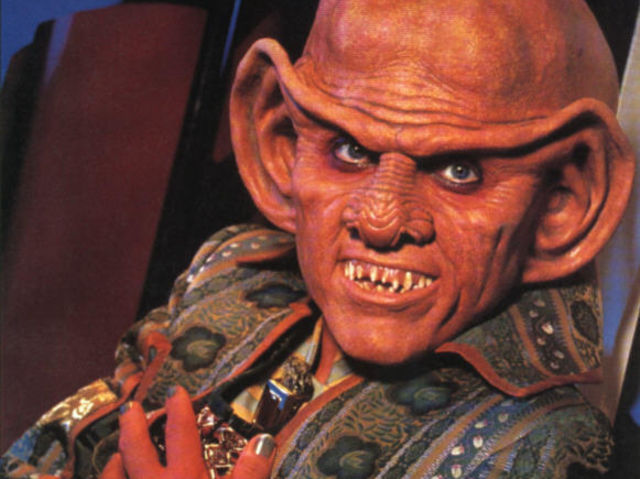
The Ferengi appeared several more times in The Next Generation but developed little beyond being stock villains. Perhaps in another timeline they would have been merely a footnote in Star Trek history, half-remembered as something that never lived up to its potential – but then came Star Trek: Deep Space Nine. Over the course of seven years, Deep Space Nine transformed the Ferengi into an interesting, complex and endearing species who rightly take their place among Star Trek’s best aliens. So, how exactly did this miraculous transformation come about?
The Ferengi became neighbours, not villains
Deep Space Nine benefits from having a Ferengi on its main cast – Quark. Quark shares many of the capitalistic and unscrupulous traits of his Next Generation predecessors, but instead of being a villain he’s the station’s bartender. This means Starfleet officers who might only have previously encountered the Ferengi during one of their schemes now lived alongside one and drank in his establishment.
This changed dynamic is apparent in the series’ first episode ‘Emissary’ in which, following the station’s abandonment by the Cardassians and subsequent Federation-Bajoran takeover, Quark is preparing to leave. Instead, Commander Benjamin Sisko encourages him to stay and help rebuild the station’s demoralised business community as community leader.
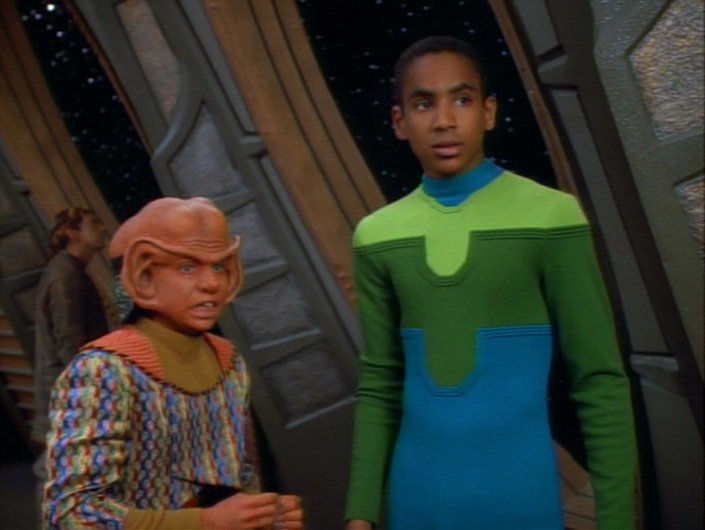
Another first-season episode to expand the Ferengi’s potential was ‘The Nagus,’ in which Sisko’s son Jake befriends Nog, son of Quark’s brother Rom. Such a friendship would have been unimaginable of the villainous and vacuous Ferengi seen in ‘The Last Outpost’ and many other Next Generation outings and makes for an interesting dynamic given the differences – and tensions – between the adults of the pair’s races.
When Rom is ridiculed by other Ferengi for sending his son to a Federation school, he withdraws Rom and Jake takes it upon himself to teach him instead. Truly then the stage was set for the Ferengi to take on a new role in the Star Trek universe.
They were fleshed out
One of the biggest differences between The Next Generation’s Ferengi and Deep Space Nine’s is that while the former portrays them as capitalistic, ruthless and opportunistic, the latter develops this into a whole religious philosophy governed by the Rules of Acquisition, a sacred text by which Ferengi live their lives. Quark often refers to rules as they apply to his present predicament. Examples include, “never place friendship above profit,” “war is good for business,” paradoxically “peace is good for business,” and “the bigger the smile, the sharper the knife.”
The series even outlines what Ferengi believe will happen when they die, ascending to the Divine Treasury, bribing the registrar for entry, having their financial success adjudged by the Blessed Exchequer, then finally bidding for a new life with the Celestial Auctioneers.
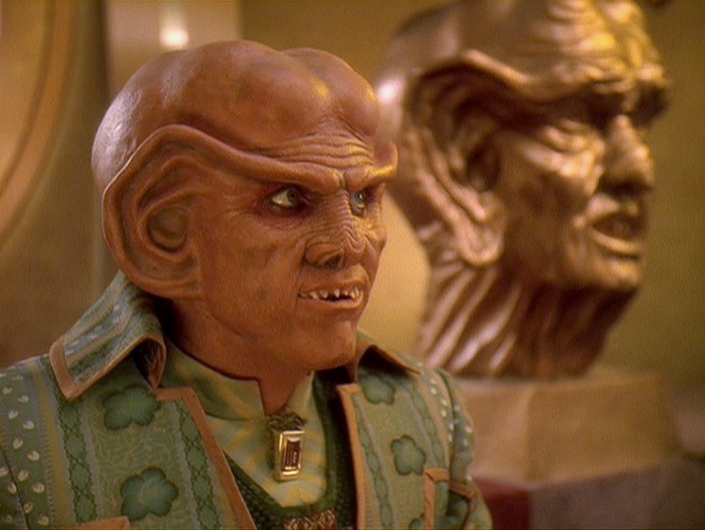
In an interview with Cinefantastique in 1994, Armin Shimerman, who had portrayed a Ferengi in ‘The Last Outpost’ before portraying Quark, expressed regret at their depiction in the former and described the Ferengi of Deep Space Nine as “three-dimensional” with a “value system” that was ethical despite being unlike that of humans. The Ferengi were evolving beyond simply being stock villains to being something richer, with a doctrine governing even their more questionable actions.
They grew as individuals
Not only are Ferengi values fleshed out, so are individual Ferengi. Despite adhering to most of his race’s principles, Quark breaks with them on various occasions. In the fourth-season episode ‘The Way of the Warrior,’ he tells Garak, an exiled Cardassian, that he decided against becoming a weapons merchant like his cousin Gaila despite its higher profitability than running a bar, because he is a “people person” and enjoys interacting with customers.
During the exchange he also reflects on his growing fondness for the Federation, something uncharacteristic of his species. When Garak derides the human drink of root beer as “vile,” Quark agrees, describing it as “so bubbly and cloying and happy,” before adding, “but you know what’s really frightening? If you drink enough of it, you begin to like it.”
One of the most significant moments that reflects this changing dynamic comes in another fourth-season episode ‘Body Parts.’ Mistakenly thinking he is going to die, Quark auctions off his vacuum-desiccated remains to improve his finances. However, upon learning he isn’t going to die after all, he faces the quandary of going through with the sale (and dying) or breaking the contract and having his assets seized and his reputation among Ferengi ruined.
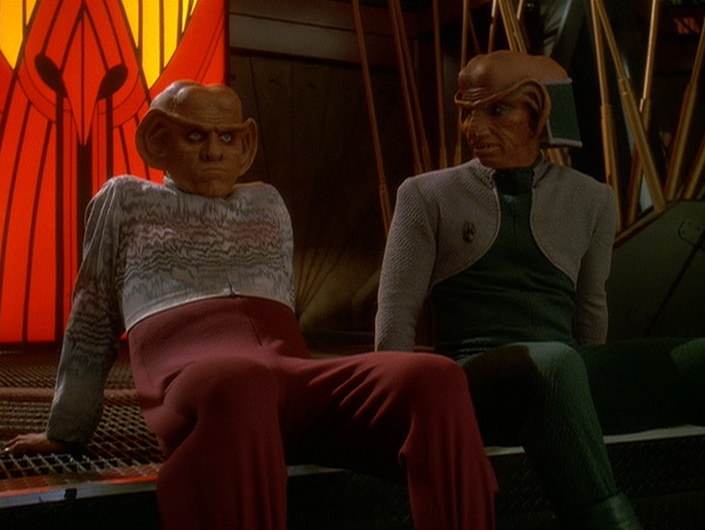
Having chosen the latter, he sits despondently in his empty bar and is surprised when the station’s crew comes to his aid, providing alcohol, glasses and furniture so that he can continue running it. In one of the series’ (perhaps even the franchise’s) most poignant scenes, the usually dry Quark is overcome with gratitude and comes to realise his friends are as much his assets as anything material.
“He started out as a rather greedy, insidious Ferengi character much like the Ferengi from Next Generation,” reflected Shimerman in 1999, “and as he resided on Deep Space Nine, a small community with other cultures […] he began to assimilate into their ways and his behaviour became more and more human, more and more empathetic, more and more congenial.”
Quark’s softer, more compassionate brother Rom marks an even bigger departure from past Ferengi. In the fourth-season episode ‘Bar Association,’ Rom, a waiter in Quark’s bar, leads the employees in unionising and striking against his brother’s pay cuts. This is all the more significant for unions being forbidden on Ferenginar. Rom grows further as the series progresses, leaving Quark’s to join the station’s maintenance crew, and marrying a Bajoran woman called Leeta.
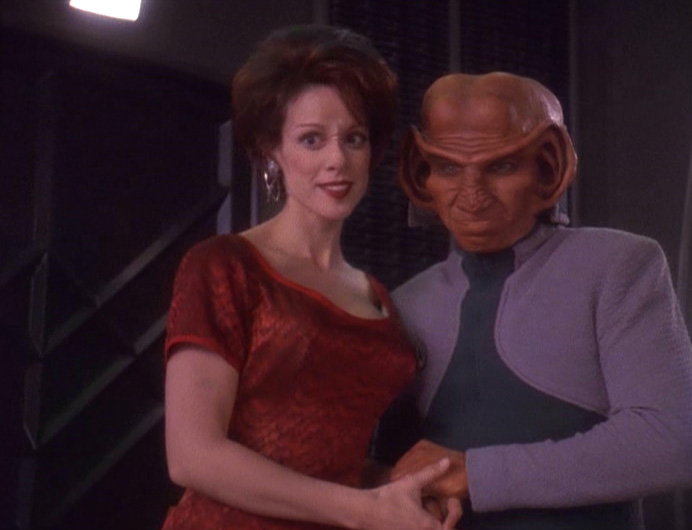
Both Quark and Rom come to be invaluable allies to the Federation during the station’s annexation by the Dominion in the sixth season. Rom comes up with a plan to build a minefield of self-replicating mines to prevent the Dominion bringing reinforcements from the Gamma Quadrant. Quark gets a Cardassian drunk in order to extract information about the Dominion’s progress in disabling the minefield, then conspires with Major Kira Nerys to send this information to Starfleet.
Rom’s son Nog also becomes a trailblazer, increasingly espousing values far more reflective of the Federation than the Ferengi. He ultimately becomes the first Ferengi in history to join Starfleet and is a hero of the Dominion War, losing his leg while defending a Federation base from Dominion forces in the seventh season episode ‘The Siege of AR-558.’ This episode also shows a more nurturing side to Quark, who cares for his stricken nephew and angrily accuses Sisko of treating him as cannon fodder.
These three characters, both in their personal growth and in their distinction from each other, gave depth and nuance to the Ferengi not seen in The Next Generation. Quark proved that there could be more to a traditional Ferengi than met the eye, while Rom and Nog proved that the species was far from homogenous. Between them, they showed that the Ferengi were more than stock villains and could be trusted allies to other races.
They explored women’s rights
Another aspect of Ferengi culture introduced in The Next Generation and explored more extensively in Deep Space Nine is the role of women in their society. Ferengi society is depicted as patriarchal to the point of misogyny; women are expected to be wives, mothers and caregivers, and are not permitted to make profit, own property, read, leave the house without male accompaniment, or even wear clothes.
Several episodes explore the plight of Ferengi women. In the second season episode ‘Rules of Acquisition,’ a woman called Pel disguises herself as a man and brokers an important interstellar trade meeting but is forced to leave upon admitting her identity. And in the third-season episode ‘Family Business,’ Quark and Rom’s mother Ishka (affectionately referred to as ‘Moogie’) angers the authorities by making profit and risks indentured servitude by refusing to repent.
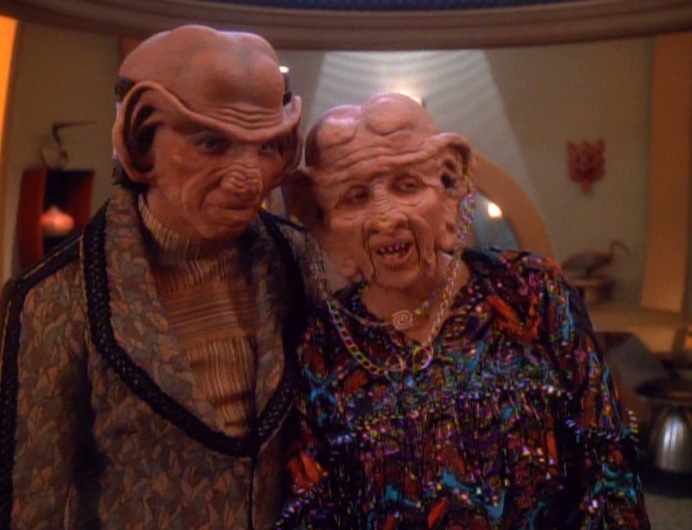
Ishka is ultimately a key figure in transforming Ferengi attitudes towards women, becoming romantically involved with the Ferengi leader Grand Nagus Zek, secretly helping him to run the Ferengi Alliance, and influencing him to pass reforms giving women more rights.
The richness of this narrative, an example of Star Trek’s habit of holding a mirror up to aspects of our own society, demonstrates how much the Ferengi evolve from The Next Generation to the end of Deep Space Nine.
Their humour was used more effectively
Given that they had been intended as threatening and villainous, the Ferengi’s goofiness was criticised during their initial outing in The Next Generation. Having recast the Ferengi as semi-trustworthy neighbours rather than antagonists, Deep Space Nine doubled down on this, and Ferengi-centric episodes often found humour in everything from the species’ extreme capitalist philosophy and religion to their larger-than-life mannerisms.
One of the most noteworthy examples is the sixth season episode ‘The Magnificent Ferengi’ (yes, the title is a play on The Magnificent Seven) in which Ishka is abducted by the Dominion and Quark assembles a team of Ferengi to mount a rescue.
The episode is a romp from start to finish. Funny moments include Quark and Rom crawling through the station’s vents and accidentally emerging in Sisko’s office (“May I help you gentlemen?” Sisko deadpans. “I was following you!” says a mortified Rom to Quark) and a disastrous holo-run-through of their plan that results in the team failing spectacularly and their hired hand Leck shooting Ishka (“I saw we weren’t gonna rescue her, so I put her out of her misery.”)
When they ultimately agree to forgo heroics for a prisoner exchange between Ishka and a Dominion diplomat being held by the Federation, Quark’s cousin Gaila accidentally shoots the prisoner. In a static shot from the dead prisoner’s perspective, each Ferengi’s head comes into view, staring down in disbelief, before all turning to Gaila. “You idiot,” Leck says.
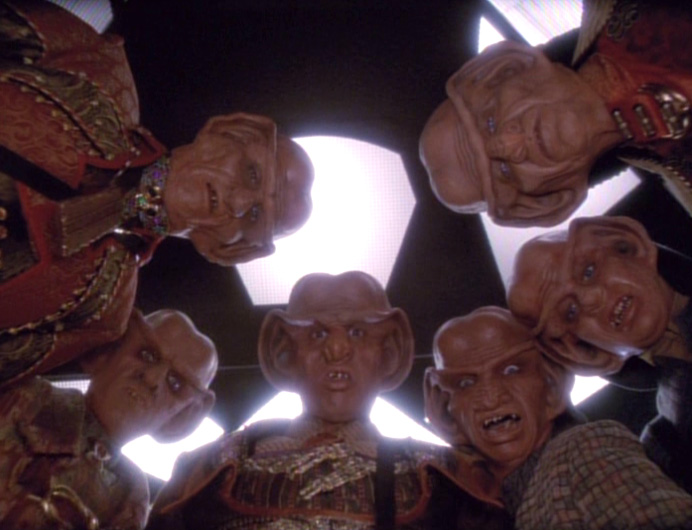
At the close of the episode, Leck declares before parting, “This is the sloppiest, most amateurish operation I’ve ever seen. If you ever do something like this again, count me in.”
By reimagining the Ferengi as neighbours rather than enemies, and by deftly balancing humour and high stakes, Deep Space Nine managed to turn one of the species’ biggest weaknesses into one of its biggest strengths.
The Ferengi became a redeemed, more human species
Over the course of Deep Space Nine, the Ferengi undoubtedly came a long way from the stock villains of The Next Generation. By exploring and developing Ferengi culture and individual Ferengi characters like Quark and Rom, as well as finding the right balance of humour and pathos with which to portray them, the series allowed the species to transcend its roots and take its place among other classic Star Trek aliens like the Klingons and the Vulcans.
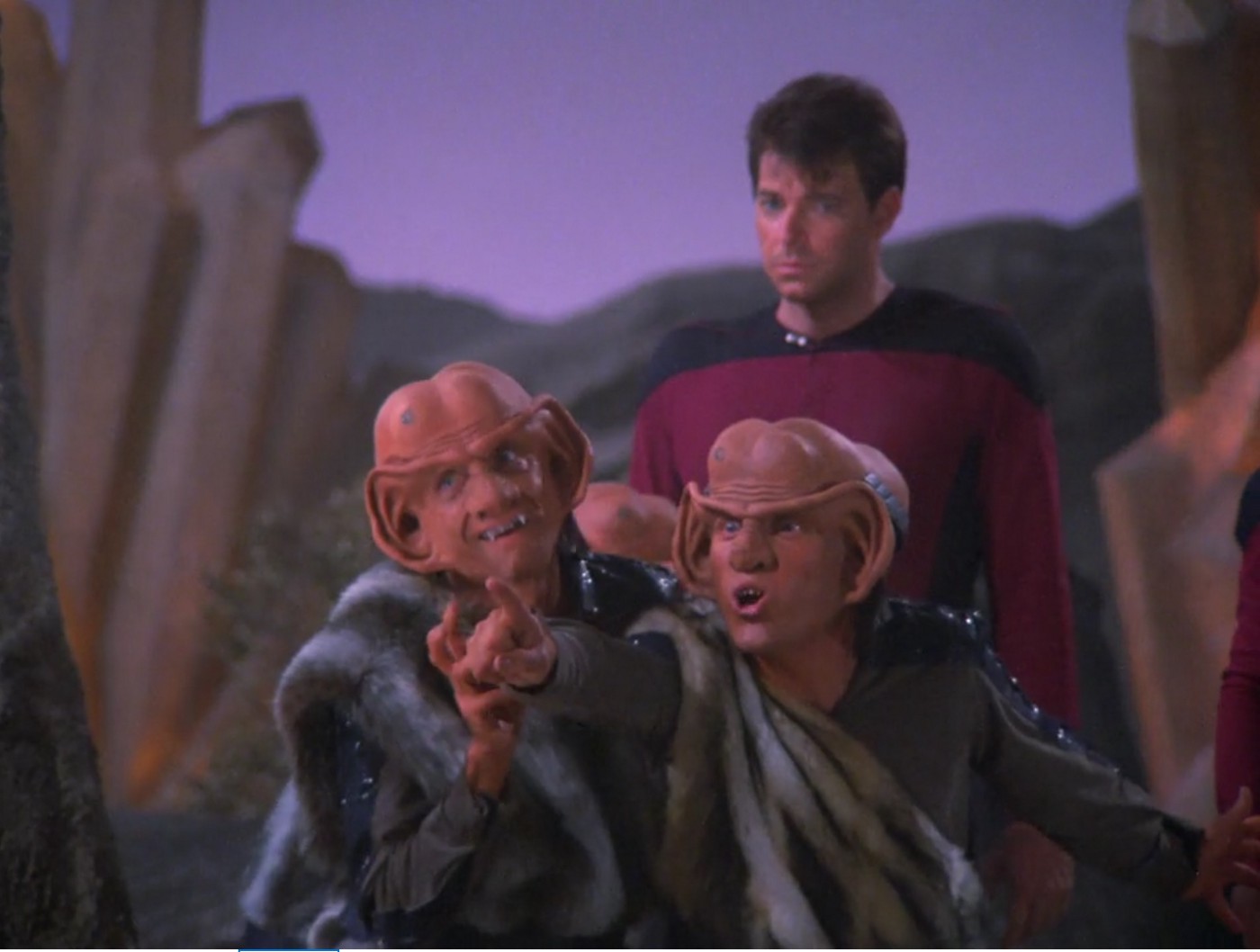
Another aspect of the Ferengi that arguably made them so much more compelling was their humanity. Several Deep Space Nine writers considered them to be the closest species to contemporary humans due to their flaws and greed. The extensive exploration of Quark’s family dynamics arguably adds to this, making the characters more relatable than their Next Generation predecessors. Deep Space Nine showrunner and executive producer Ira Steven Behr remarked on this in 1999.
“To me, the Ferengi […] are the closest to 20th century human beings on the show,” he said. “They’re us. They have the energy of 20th century human beings, they have the drive, they have the greed, they have the sense of self that we do. You can’t trust them until you can trust them, and once you understand them, they’re quite wonderful. And, like us, they’re constantly rising above their limitations, and what more can you ask from anyone?”
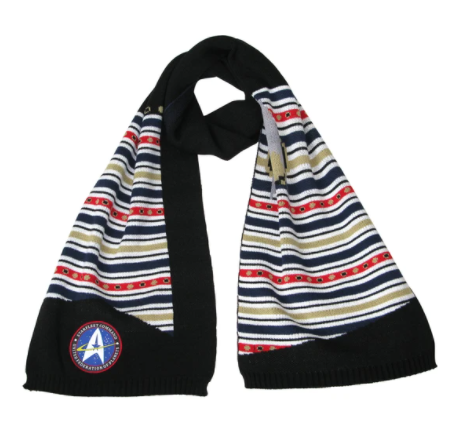
Star Trek: The Next Generation scarf – order now from the Lovarzi shop!








Leave a Reply